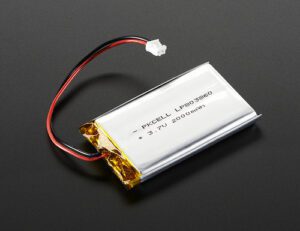2015 PHMSA Regulation: Shipping Lithium Batteries
January 8, 2015
This Year’s Rules on the Shipment of Lithium Batteries
With new OSHA regulation already days in effect, new regulation concerning the shipment of lithium batteries is also in store for early 2015. Starting February 6th, 2015, the Department of Transportation’s (DOT) Pipeline and Hazardous Materials Safety Administration (PHMSA) and the Federal Aviation Administration (FAA) are revising the rules on shipments of lithium batteries to reduce the overall number of current exceptions for businesses and increase the level of requirements on shippers.
They’re Everywhere: the Uses and Unseen Dangers of Li-ion Batteries
Lithium-ion or “li-ion” batteries can be found in smartphones, laptops, e-cigarettes, e-bikes, small electric vehicles like golf carts, and also have military and aerospace applications. They are rechargeable, and most under the right conditions can be of good working use for years. They may even prove a viable replacement for the lead-acid batteries found in hybrid cars, since they have four times the density (which means lithium-ion batteries can hold a longer charge) than lead-acid batteries.
But they are not without their own dangers, as they can pose both a chemical and electrical hazard. Internal short circuits in these types of batteries can cause what is called thermal runway, which is a reaction wherein the temperature inside the battery rapidly increases, which sometimes can lead to fires and even explosions. Because of these potential hazards, lithium batteries are characterized as dangerous goods by the UN Model regulation for the Transport of Dangerous Goods.
A Powder Keg History
In 2006, Apple recalled 1.8 million of the Sony-made battery packs for two of its popular notebooks because of mass reports of overheating, and in some cases, burn injuries. In that same year, Dell also recalled 4.1 million of its Latitude, Precision, and XPS laptops for the same reason (the batteries were also manufactured by Sony).
Lithium batteries, and lithium metal batteries in particular, when packed together in bulk shipments can even cause damage to the hull of a passenger aircraft if they start to thermally react. This is exactly what happened on September 3rd, 2010, when a UPS cargo plan carrying 81,000 li-ion batteries caught fire and crashed after taking off from Dubai.
But these incidents didn’t stop demand from skyrocketing, and in 2013, lithium-ion battery market was worth $11.7 billion (up from around $10 billion in 2000). In mid-2014, research by the FAA showed that li-ion batteries were even more unstable and prone to disastrous fires and explosions than previously thought.
What the 2015 Regulations Mean
The International Civil Aviation Organization (ICAO) prohibition on lithium metal batteries transported as cargo on passenger airlines has already gone into effect a week ago on January 1st, 2015. The ICAO ruling also imposes more stringent regulations on the shipments of lithium-ion batteries when packaged alone and not inside devices or equipment. This ruling will affect international shipping, as shipping li-ion batteries by passenger plane is already banned in the U.S.
Not only do the PHMSA, FAA, and ICAO regulations impose more rules on bulk air shipments of these batteries, but those shipping consumer electronics, medical devices, and power tools will also face tighter scrutiny.
For the PHMSA and FAA regulation coming on February 6th, 2015, this means that more detailed and accurate marking, labeling, and documentation will be necessary for all shippers of lithium batteries. Businesses must also declare the status of their lithium battery shipments. The requisite amount of battery packaging will be changed as well, to hopefully lead to greater safety across the board. These stipulations, which were before optional to companies, must be met, or else face businesses could face delays of shipments, returns, or in some cases, fines.


